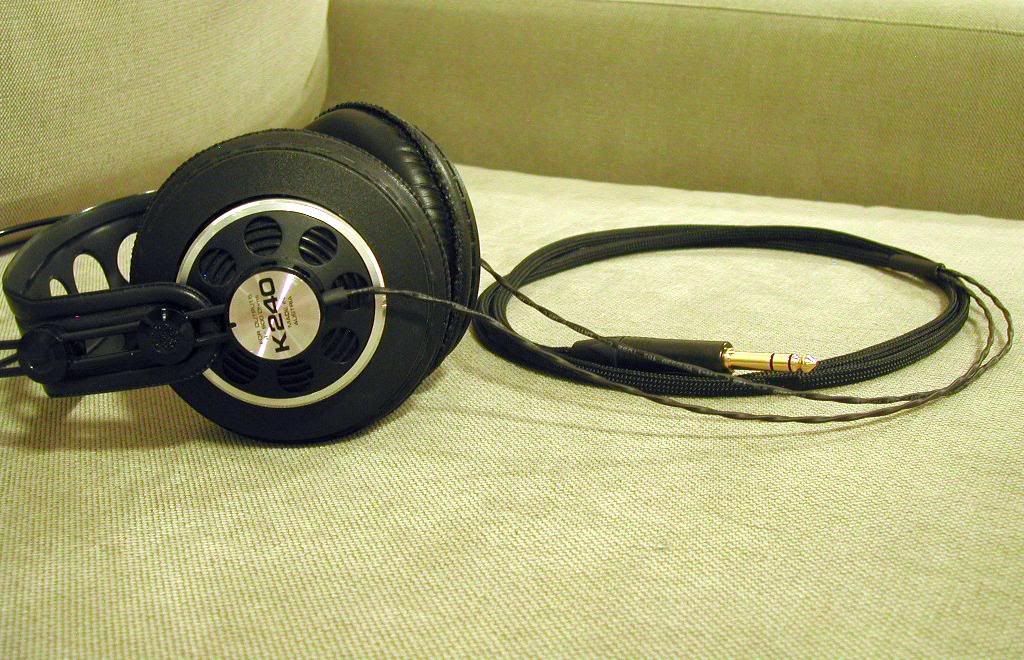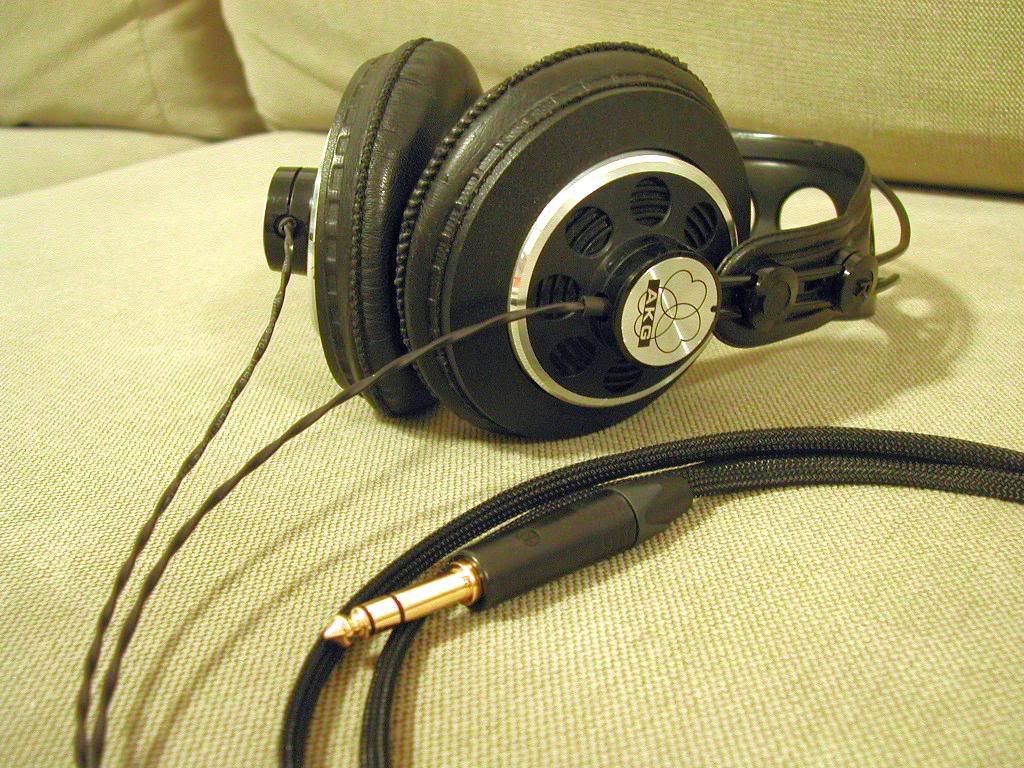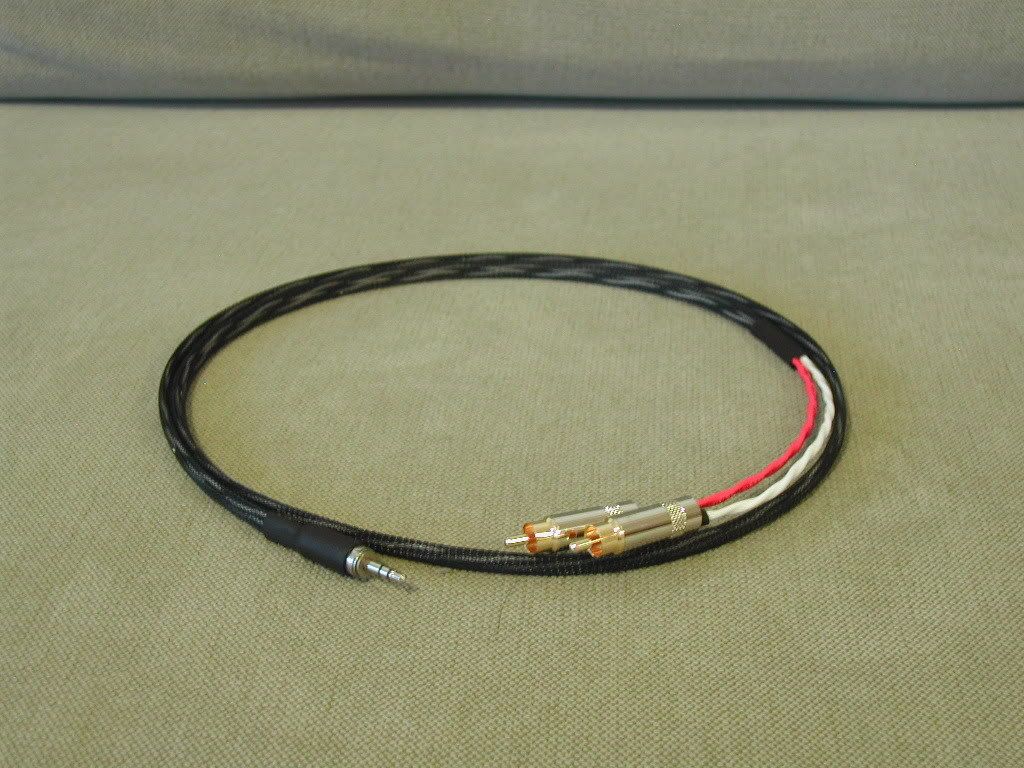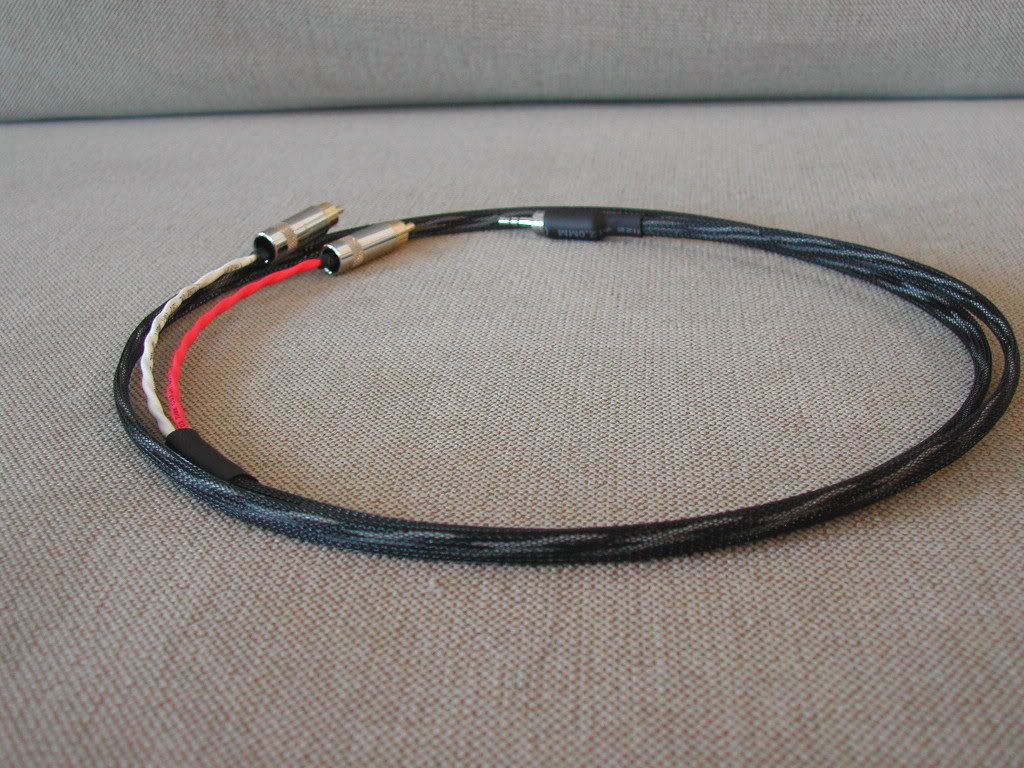nikongod
DIY-ku
- Joined
- Jan 24, 2005
- Posts
- 8,882
- Likes
- 130
In what can most readily be described in a fit of boredom fueled by caffeine I baked a pair of cables.
22ga magnet wire wrapped TIGHTLY around an x-acto knife handle then stretched over a single strand of 41ga magnet wire (yes, 41 ga, its about the size of a strand of human hair...) inside a nylon shoelace for strain relief.
RCA plugs came from radio shack, 6 for $3.50 WOOT!

Here they are sitting on my platter.
Between the turntable/tonearm breakout box and the Step-up-transformer is a 6 inch cable I made with "some not so clear tape" and 2 strands of 41ga magnet wire. It is not shielded, but the primary of the transformer is wired balanced and floating so there is NO hum, even with the tonearm ground wire removed.
The "peculiar junk" atop the otherwise aesthetically pleasing bottlehead seduction is a pair of binding posts to mount external loading resistors for the SUT. Loading the SUT properly is VERY important. The pot is there until I "settle" on a specific load at which time it will be replaced with a resistor.

A closeup of the new cables.
Version 2 will look more like what they are trying to be, with the coils extending into the RCA plugs... I dont think I will use such absurdly thin wire as I broke one moving it from my work room to my bedroom. Version 2 will also have a tighter wrap for the coils. I dont like how "free" the shoelace is in the cage.
Thus far they sound EXCEPTIONALLY dynamic. If there is a spike in the music level hang onto your earlobes. Anything with strong transients throws you into your seat.
22ga magnet wire wrapped TIGHTLY around an x-acto knife handle then stretched over a single strand of 41ga magnet wire (yes, 41 ga, its about the size of a strand of human hair...) inside a nylon shoelace for strain relief.
RCA plugs came from radio shack, 6 for $3.50 WOOT!

Here they are sitting on my platter.
Between the turntable/tonearm breakout box and the Step-up-transformer is a 6 inch cable I made with "some not so clear tape" and 2 strands of 41ga magnet wire. It is not shielded, but the primary of the transformer is wired balanced and floating so there is NO hum, even with the tonearm ground wire removed.
The "peculiar junk" atop the otherwise aesthetically pleasing bottlehead seduction is a pair of binding posts to mount external loading resistors for the SUT. Loading the SUT properly is VERY important. The pot is there until I "settle" on a specific load at which time it will be replaced with a resistor.

A closeup of the new cables.
Version 2 will look more like what they are trying to be, with the coils extending into the RCA plugs... I dont think I will use such absurdly thin wire as I broke one moving it from my work room to my bedroom. Version 2 will also have a tighter wrap for the coils. I dont like how "free" the shoelace is in the cage.
Thus far they sound EXCEPTIONALLY dynamic. If there is a spike in the music level hang onto your earlobes. Anything with strong transients throws you into your seat.






























